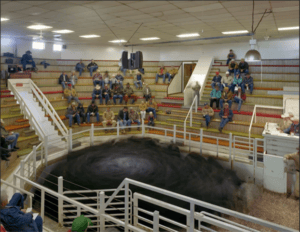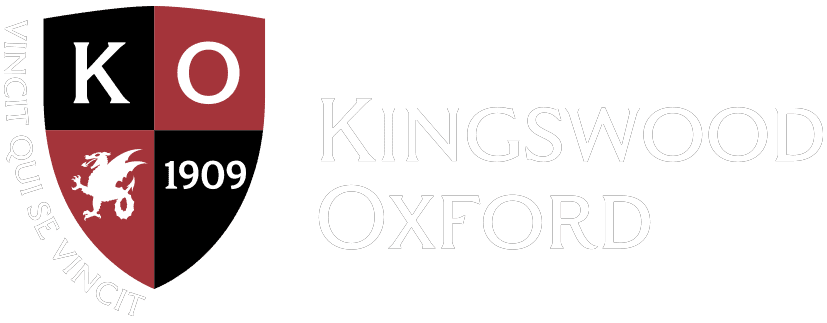May 29, 2025
Symposium Class Immerses Students in the Creative Writing Process
by Cameron Biondi
Upper School English teacher
The Baird Writers’ Symposium, which brings an esteemed author to campus each year for presentations, discussions, and master classes, provides a rich opportunity for students to immerse themselves in the writer’s creative process. This was especially so last fall, when Karen Russell, an extraordinarily creative and imaginative writer, visited the school.
Russell, the recipient of a MacArthur Genius Grant and a finalist for the 2012 Pulitzer Prize for fiction, infuses her novels and short stories with magical realism featuring supernatural elements such as ghosts, seances, and dreams.
Exploring the Life of a Writer
In my Symposium class, which devoted an entire semester to Russell’s work, students analyzed, discussed, and wrote about her characters, plots, and themes, while also focusing on understanding the approaches, methodologies, and experiences Russell employs as she creates her work. When Russell visited campus near the end of the course, students learned first-hand how she moves through the world as a working writer.
Trying it for Themselves
My Symposium students gained further insight into Russell’s writing experience by crafting their own short stories incorporating supernatural or magical elements, just as Russell’s fiction does. Students began by devising brief premises for their stories. This involved creating a character who’s influenced by some supernatural person, object, or force, and then producing a storyboard of the plot. I encouraged them to base their story on a single visual, tactile or auditory “seed” that would propel the narrative.
Russell herself had found just such a kernel when she saw a time-lapse photo of a cattle auction in which the circling steers resemble the clouds of a tornado. This compelling image served as the impetus for her short story, “The Tornado Auction.”

With this model in mind, one student focused her story on an image created with a pinhole camera, which in her narrative became “a small wooden box—six mahogany-red slabs of wood pressed together with a pin-sized hole and an iron flip cover.” Another student was inspired by a painting of white flowers, which appeared in her story as a bouquet: “Findlay, who had never felt so simultaneously shy and smitten, pulls the lilies from behind his back with a flourish.”
Rough Magic
The next step was for students to write five-page rough drafts of their stories. They were surprised and delighted to see their original and sometimes wacky ideas, which previously had existed only in their brains, come alive on the page. One student wrote about a woman seeking an organ transplant who discovers that she and a potential donor had been switched at birth. Another imagined himself as a beleaguered restaurant chef who’s suddenly transformed into one of the lobsters he boils in a pot: “The sensation felt as though hundreds and hundreds of daggers had punctured my skin.”
Fertile Feedback
Students then shared their rough drafts with their classmates, who provided constructive comments, suggestions, and tweaks. They also sought out feedback from friends and family members. These varied audiences gave students a chance to test their ideas and techniques, to see which worked and which didn’t, and to revise their stories accordingly.
Thus, just as professional authors send early drafts to agents, editors, and fellow writers, students glean outside opinions. This provided them with an appreciation of the patient and deliberate process that authors pursue as they craft their work.
Building Literary Muscles
Once their concepts and approaches had been road tested, the students expanded and enriched their rough drafts into fully realized 10-page stories, adding new characters, richer details, and deeper layers of meaning. This was hard work, requiring them to experience the sustained effort, elaboration of ideas, and fragile balance of freedom and control, and of fluidity and lucidity that creative writers strive to achieve.
Blossoming Writers
The stories written during this two-month process were extraordinarily varied, imaginative, inventive, and inspired. Many of them provided unexpected and delightful moments of humor, weird transformations, stunning absurdity, penetrating insight, and sharp satire. Most importantly, each student took pride in the experience of being a literary farmer who planted a magical seed, and then carefully tended, nurtured, and pruned the emerging plant until it blossomed into a unique flower of human experience and meaning.
Thinkers
Blog Main News
